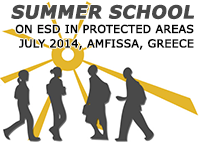|
|||||
| |
|
Home Partners Designated areas & BRs The course Trainers Presentations Students' Essays - TOOLKIT - Recommendations for Nagoya Participants Agenda Report Students' Info Practical Info The host venue Funds Contact us |
|
Designated areas & BRs Designated areas in general typically follow the “zoning approach” by being established around one or more strictly protected “core areas” and usually incorporate a much wider area (transition or buffer zone). Biosphere Reserves of the UNESCO / MAB program are considered “living” or “territorial” laboratories” where new and optimal practices to manage natural processes and human activities are tested and demonstrated. There are the ideal places to put Sustainable Development as well as Education for Sustainable Development in practice. Biosphere Reserves serve three primary functions: What is specific for BRs is that:
|
Under the auspicies of the hellenic National Comission for UNESCO |
||





